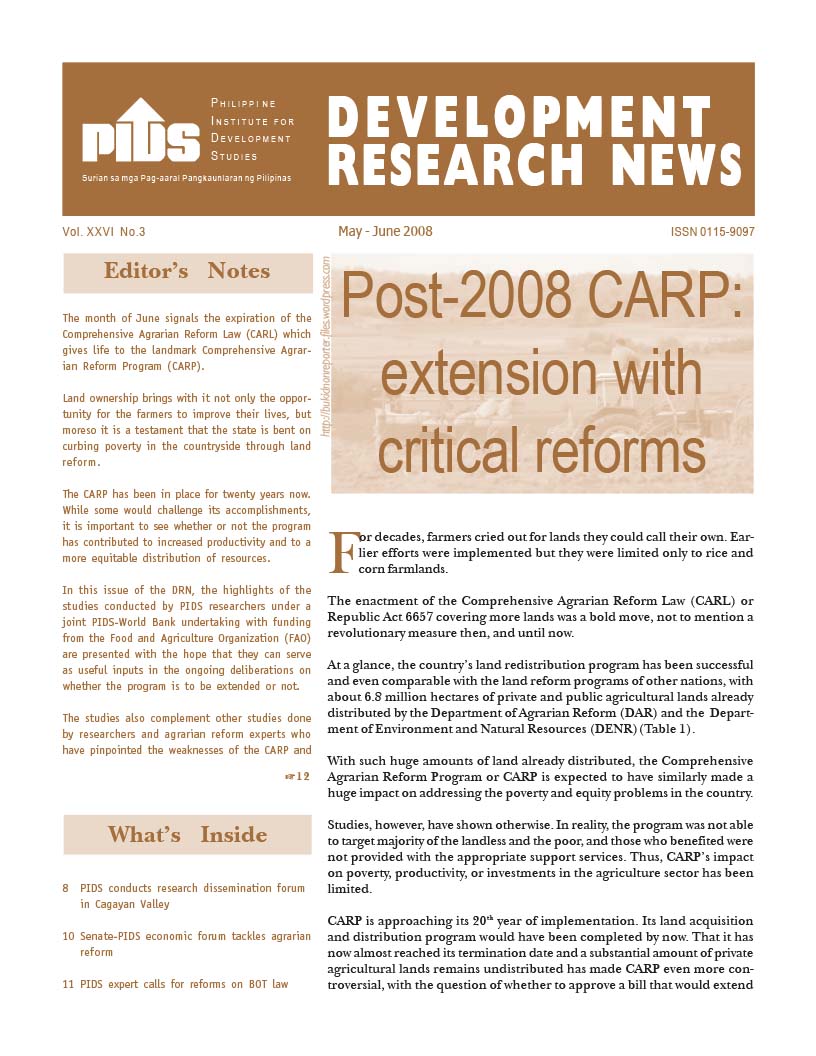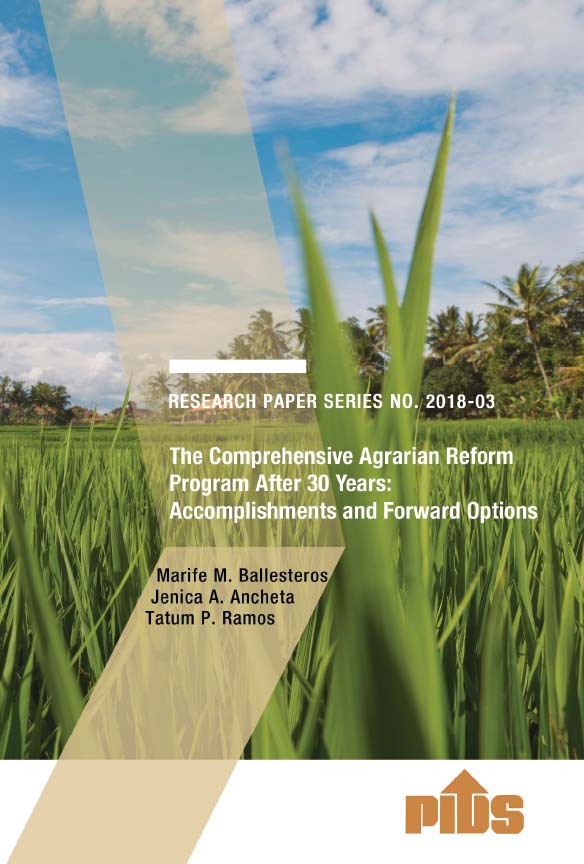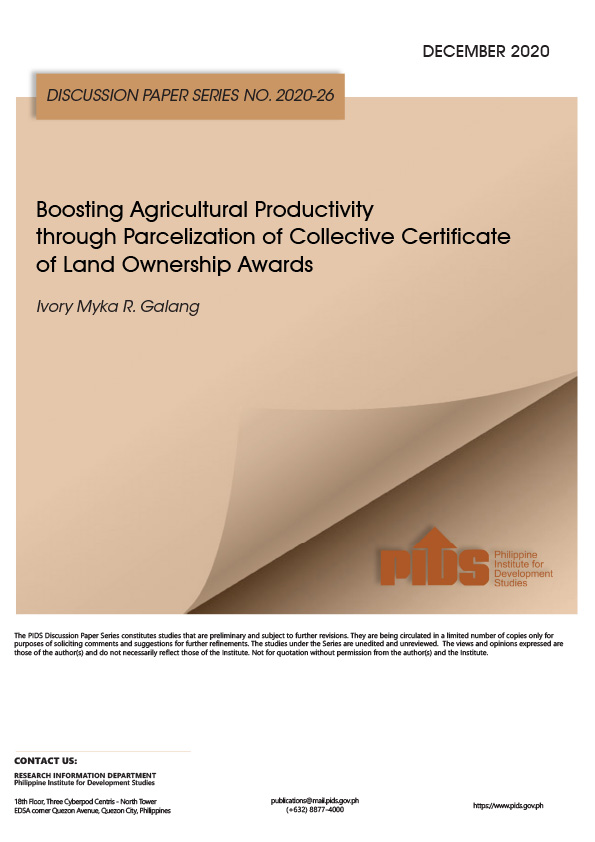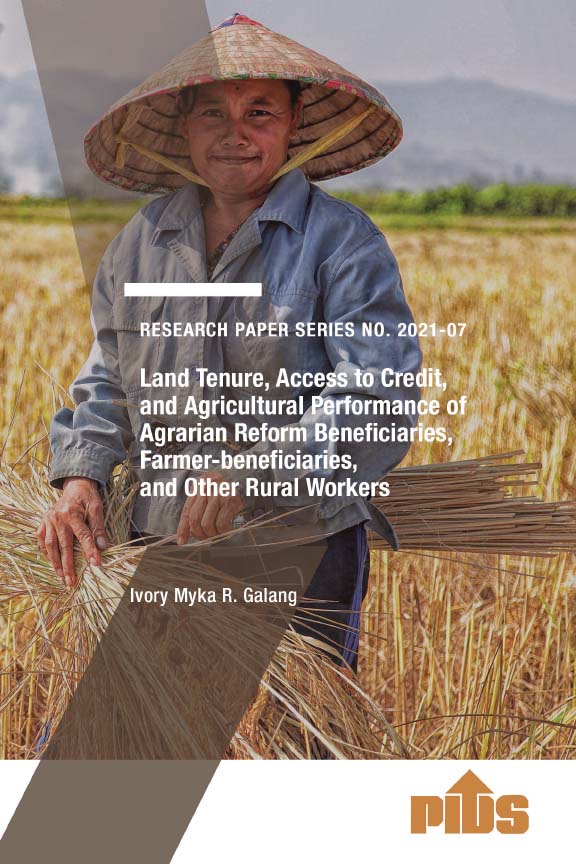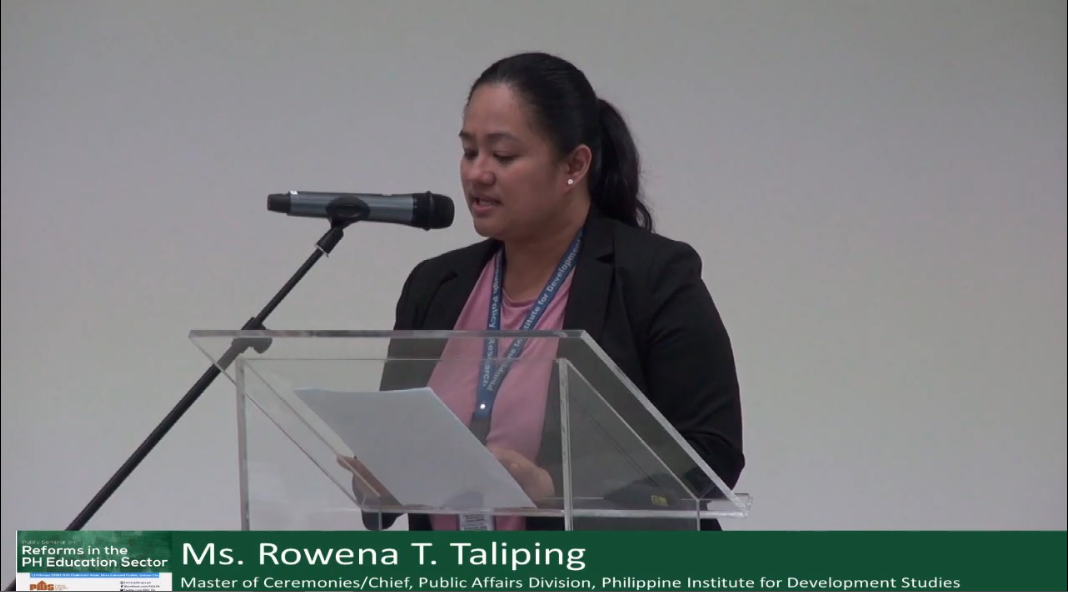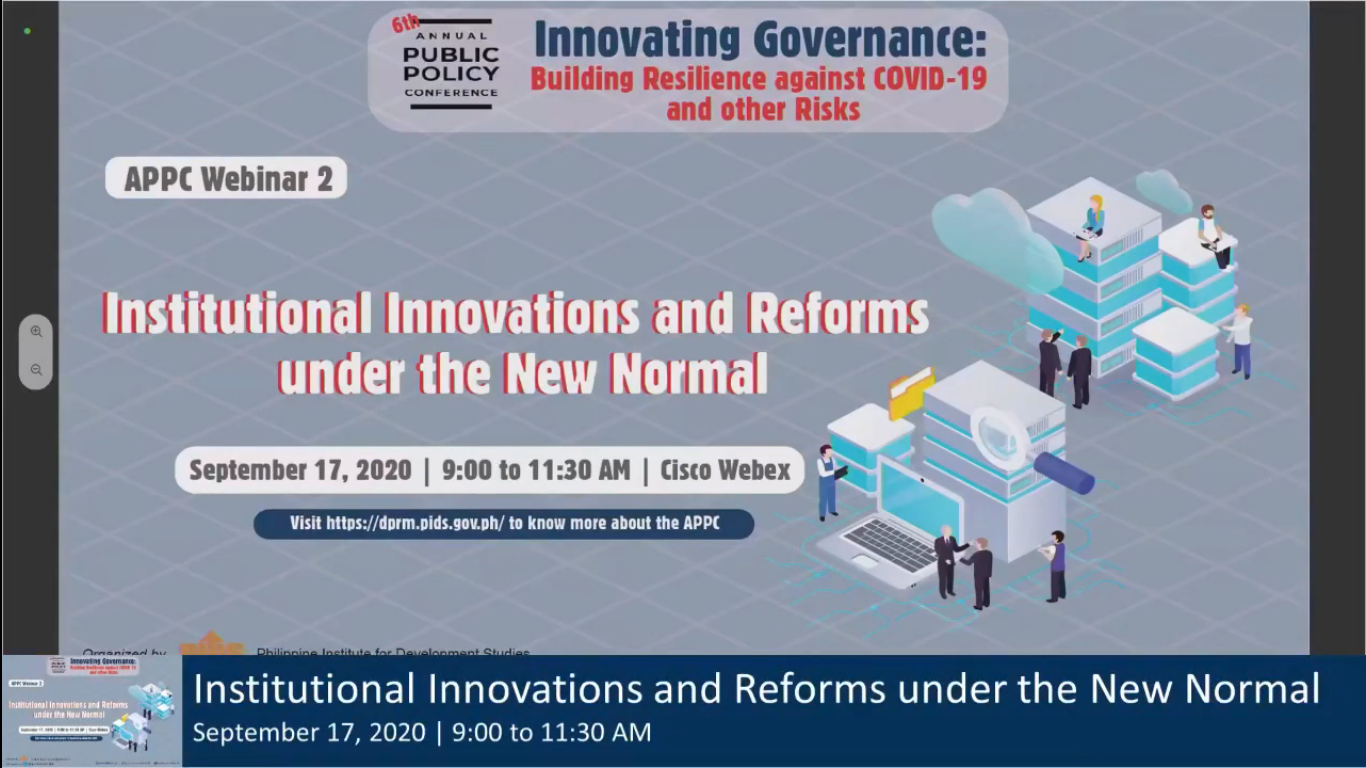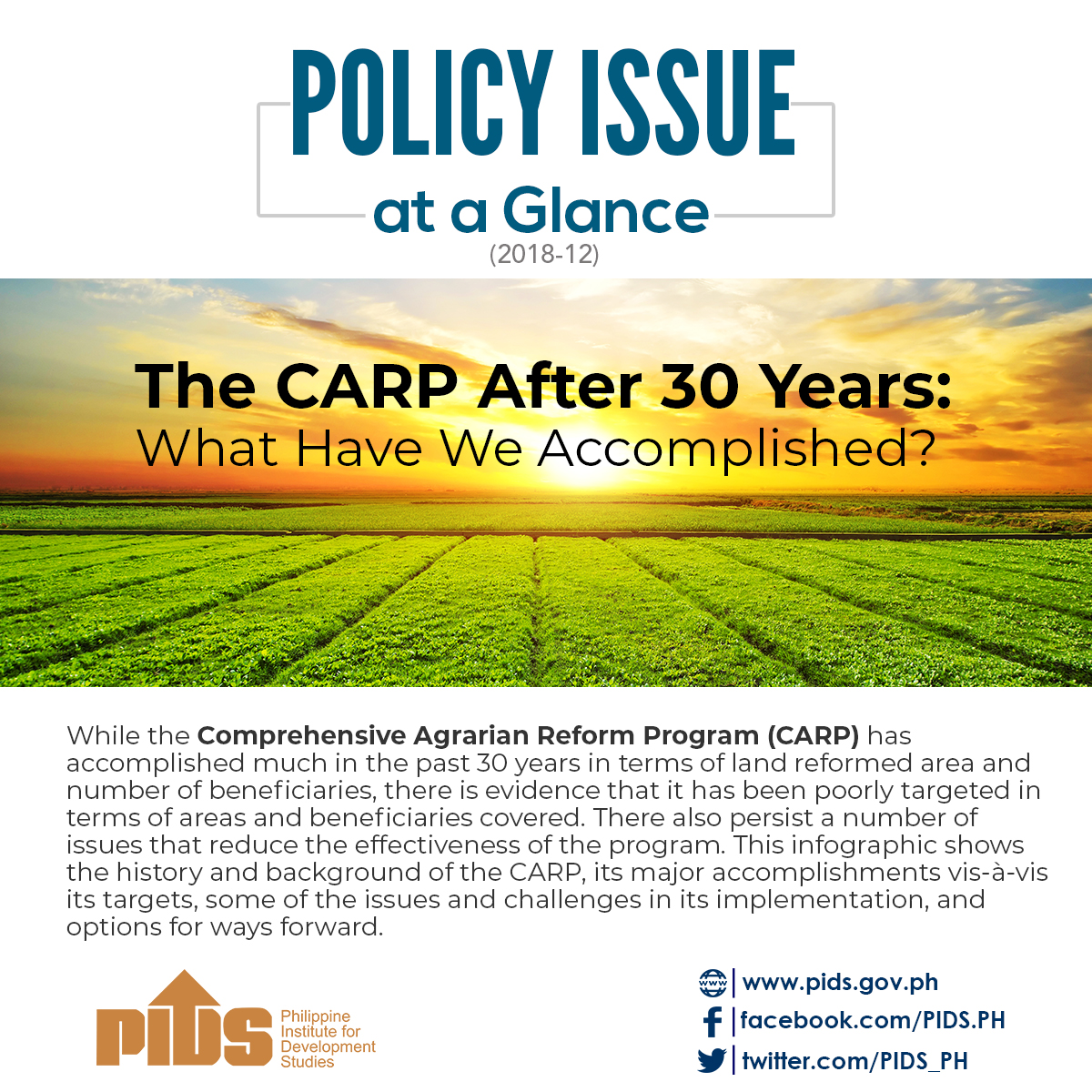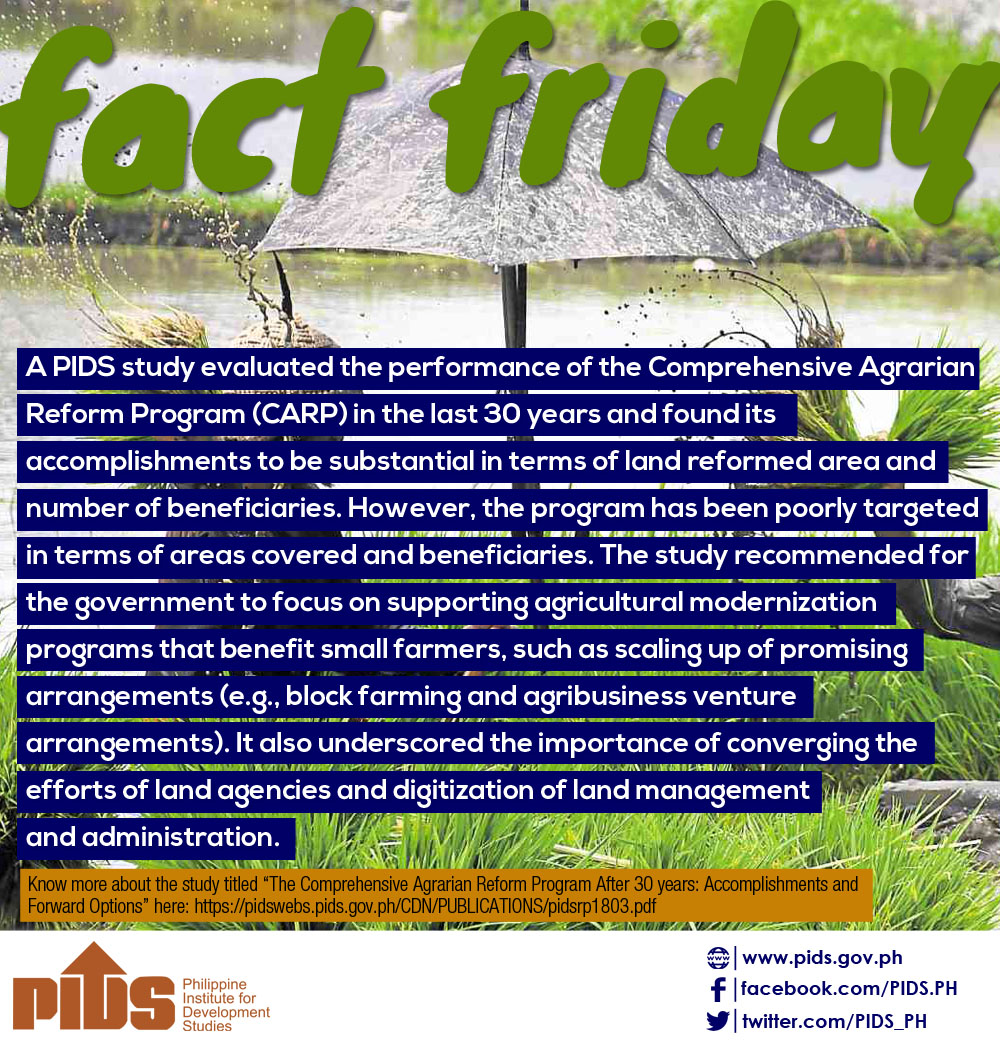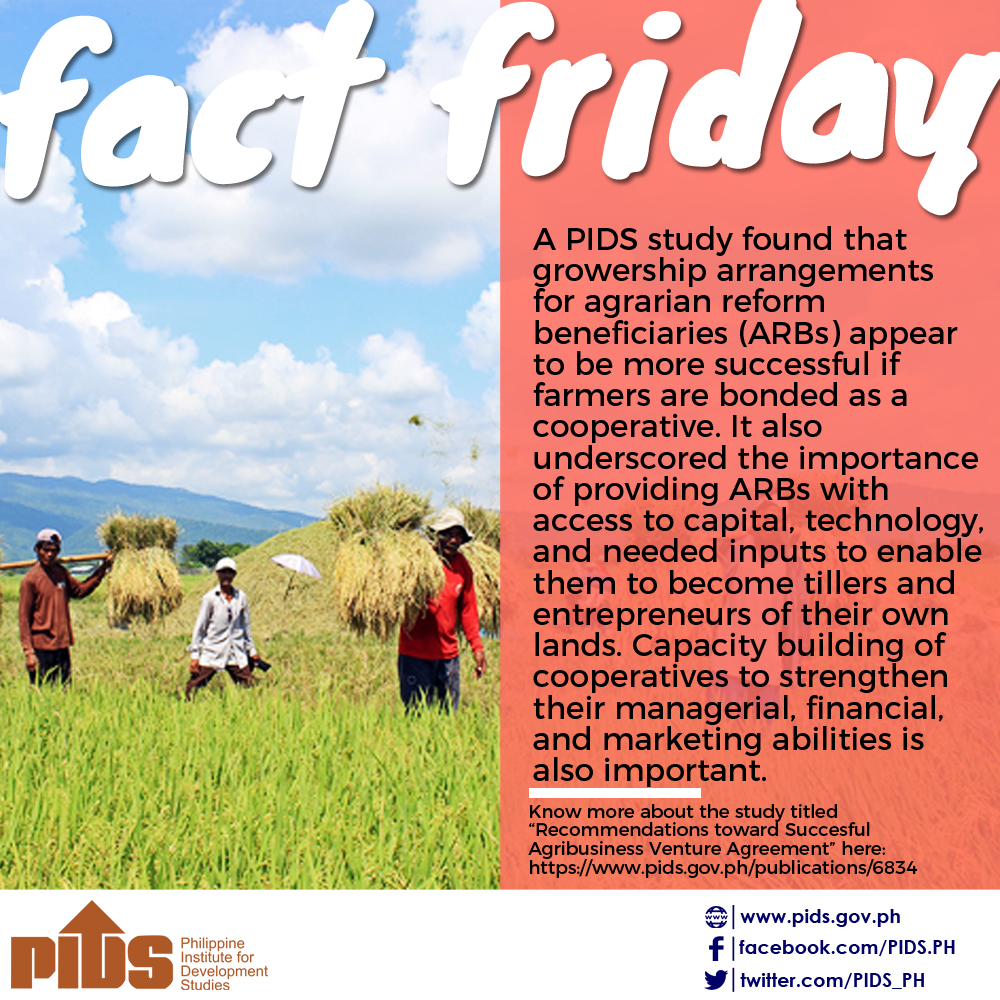Land ownership brings with it not only the opportunity for the farmers to improve their lives, but moreso it is a testament that the state is bent on curbing poverty in the countryside through land reform. The Comprehensive Agrarian Reform Program (CARP) has been in place for 20 years now. While some would challenge its accomplishments, it is important to see whether or not the program has contributed to increased productivity and to a more equitable distribution of resources. In this issue of the DRN, the highlights of the studies conducted by PIDS researchers under a joint PIDS-World Bank undertaking with funding from the Food and Agriculture Organization (FAO) are presented with the hope that they can serve as useful inputs in the ongoing deliberations on whether the program is to be extended or not.

